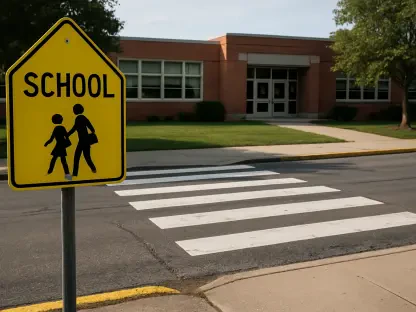The sudden announcement from the Department of Education on July 1, declaring a freeze on over $6 billion in federal education grants, sent a jolt of alarm through schools across the nation, particularly those serving English Language Learner (ELL) students, who rely heavily on these funds. This massive funding halt threatened critical programs, including bilingual education initiatives supported by Title III-A grants, which are essential for many institutions catering to diverse populations. The potential loss of these resources sparked immediate concern among educators, administrators, and advocates, who feared the devastating impact on students already navigating significant language barriers. For schools heavily reliant on federal support, the news was a stark reminder of how quickly policy shifts can upend educational equity. This unfolding crisis brought to light not only the fragility of funding structures but also the resilience of communities determined to protect vital programs for their students.
Impact on Bilingual Education Programs
Immediate Threats to Schools
The funding freeze posed an imminent danger to schools like Eugenio Maria De Hostos Charter School in Rochester, New York, where bilingual education forms the cornerstone of its mission. Serving a student body that includes 180 ELL students, this charter school depends on Title III-A grants to sustain its dual-language program for English and Spanish speakers. The potential loss of over $25,000 from this specific grant, alongside other federal funding totaling more than $127,000, created a dire situation. Administrators faced the grim prospect of slashing 22 staff positions, which would have directly undermined the school’s ability to deliver specialized instruction. Beyond staffing, the cuts threatened to eliminate extracurricular activities and field trips that enrich the learning experience for ELL students, many of whom rely on these opportunities to build language skills in real-world contexts. The immediate risk was clear: without federal support, the school’s capacity to foster bilingual proficiency and cultural integration would be severely compromised.
Equally alarming was the potential ripple effect on the quality of education provided to ELL students at Eugenio Maria De Hostos and similar institutions. Title III-A grants play a pivotal role in hiring English as a New Language (ENL) teachers who are trained to address the unique needs of non-native speakers. These funds also support the development of bilingual curriculum materials tailored to help students bridge language gaps while meeting academic standards. The threat of losing such resources meant that students might face reduced access to personalized instruction, a critical component for overcoming linguistic challenges. Additionally, the loss of funding could have forced the school to scale back on essential support systems, such as tutoring and parental engagement programs, which are vital for ensuring ELL students thrive. The freeze exposed just how much these grants are not mere supplements but fundamental pillars of educational equity for vulnerable populations in diverse communities.
Administrative Challenges
School administrators, like Sandra Chevalier-Blackman, CEO of Eugenio Maria De Hostos Charter School, found themselves grappling with unprecedented uncertainty during the funding freeze. Tasked with maintaining stability for students and staff, Chevalier-Blackman and her team were forced to prepare alternative budgets in secrecy to avoid sparking panic within the school community. The possibility of cutting nearly two dozen jobs loomed large, creating a logistical nightmare as they assessed which programs and positions could be sacrificed without completely derailing the school’s mission. This behind-the-scenes planning required not only financial acumen but also a delicate balance of transparency and discretion, as administrators sought to shield teachers and families from the distressing reality of potential layoffs. The burden of these decisions highlighted the intense pressure placed on school leaders when federal funding hangs in the balance.
The emotional toll on administrators during this crisis cannot be understated, as the funding uncertainty permeated every aspect of school operations. For leaders like Chevalier-Blackman, the stress of potentially dismantling a carefully built bilingual program weighed heavily, especially given the cultural significance of fostering dual-language education in a diverse community. The fear of failing students who depend on specialized support for academic success added a profound layer of anxiety to the already complex task of budget management. Moreover, the need to maintain a facade of normalcy for the sake of morale required immense emotional resilience, as administrators navigated private deliberations while publicly reassuring stakeholders. This period of limbo underscored the precarious position of schools reliant on federal grants, where sudden policy changes can thrust leaders into crisis mode, forcing them to prioritize survival over long-term educational goals.
Broader Implications for Charter Schools
Systemic Funding Shortfalls
The funding crisis illuminated deeper systemic issues faced by charter schools, particularly in the Rochester area, as articulated by Paul Miller, CEO of Charter Champions, a nonprofit advocating for these institutions. While charter schools are eligible for Title III-A grants, the amounts allocated often fall woefully short of meeting their actual needs, especially for those serving significant ELL populations. Unlike traditional public schools, charters frequently lack access to stable local funding streams, making federal grants a critical lifeline. Miller emphasized that the chronic underfunding of these schools hampers their ability to provide equitable education, as they struggle to hire enough specialized staff or invest in comprehensive bilingual programs. This persistent shortfall reveals a structural flaw in how resources are distributed, leaving charter schools vulnerable to even minor disruptions in federal support and unable to fully address the needs of diverse student bodies.
Compounding the issue is the scarcity of reliable alternative funding sources for charter schools, which often operate as 501(c)(3) organizations with limited financial buffers. Without consistent federal backing, these schools must turn to unpredictable grants or philanthropy, which rarely provide the stability needed for long-term planning. Miller noted that the lack of dependable resources frequently forces staff to take on additional unpaid responsibilities, stretching already thin budgets and risking burnout among educators. This dependency on federal funds creates a precarious cycle where any interruption, like the recent freeze, threatens to unravel the educational mission of charter schools. The broader implication is a stark inequity in education delivery, as schools serving ELL students—often in underserved communities—bear the brunt of systemic funding gaps, hindering their capacity to offer the same opportunities as better-resourced districts.
Future Uncertainties
Looking ahead, the funding freeze and subsequent reversal raise critical questions about the long-term stability of federal education support, particularly for bilingual programs. While the Trump administration’s decision on July 25 to release the withheld grants provided immediate relief, it did little to assure schools of consistent backing in the years to come. The sudden nature of the initial freeze exposed how policy shifts can disrupt educational planning overnight, leaving schools like Eugenio Maria De Hostos in a state of perpetual uncertainty. For charter schools with limited financial reserves, this unpredictability complicates efforts to build sustainable programs for ELL students, as administrators must constantly prepare for potential funding interruptions. The incident serves as a cautionary tale about the fragility of current funding mechanisms and the urgent need for more robust, predictable support structures.
Addressing these uncertainties requires a concerted effort to prioritize consistent federal investment in education, especially for vulnerable populations like ELL students. The bipartisan push that led to the funding restoration—with legal action from Democratic attorneys general and pressure from Republican senators in rural areas—demonstrates a shared recognition of the importance of Title III-A grants, which allocate approximately $890 million nationwide for ESL services annually. However, this rare political alignment does not guarantee future stability, as policy priorities can shift with changing administrations. Schools and advocates must continue to press for policies that safeguard education funding from abrupt changes, ensuring that bilingual programs are not left at the mercy of political whims. Only through such sustained commitment can the educational system prevent future disruptions and uphold equity for students who depend on these critical resources.
Reflecting on Lessons Learned
The reversal of the funding freeze by the Trump administration marked a pivotal moment for schools reliant on federal grants, averting a crisis that could have dismantled bilingual education programs across the nation. It preserved essential staff positions and resources at institutions like Eugenio Maria De Hostos Charter School, ensuring that ELL students continued to receive the support they needed. Yet, the episode left an indelible mark on educators and administrators, who had to navigate weeks of uncertainty and plan for worst-case scenarios. The bipartisan effort that spurred the release of over $6 billion in grants, including significant allocations for ESL services, reflected a rare consensus on the value of educational equity, even as it exposed underlying vulnerabilities in funding systems.
Moving forward, the focus must shift to establishing more resilient funding frameworks that protect schools from sudden policy disruptions. Stakeholders, including policymakers and education advocates, should collaborate to develop mechanisms that guarantee consistent federal support for bilingual education and ELL programs. Exploring innovative funding models, such as multi-year grant commitments or emergency reserve funds for charter schools, could provide a buffer against future crises. Additionally, amplifying the voices of school leaders and communities directly impacted by these issues will be crucial in shaping policies that prioritize long-term stability. This moment serves as a call to action to strengthen the foundation of educational equity, ensuring that every student, regardless of language background, has access to the resources needed to succeed.









